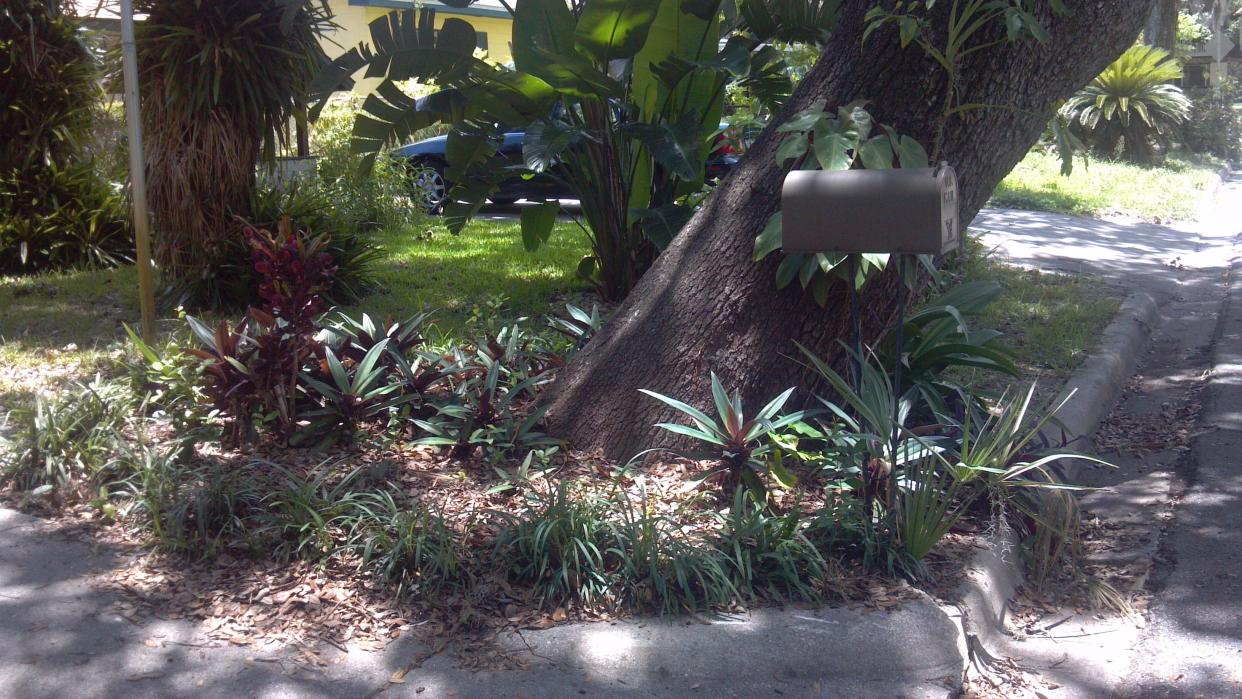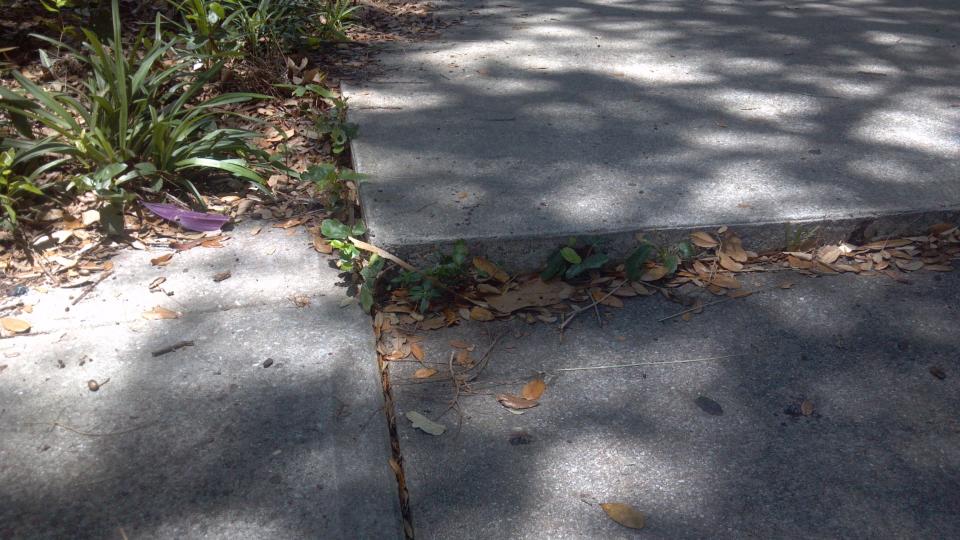Plant the right tree in the right place to add beauty, shade to your yard | Sally Scalera

Support local journalism: Find offers for new subscribers here: Special Offers — FLORIDA TODAY.
Want to read our e-Edition? Here are some tips for getting the best experience.
I have heard from a few residents who live in subdivisions where they are beginning to remove all the large trees because they are causing damage to the sidewalks or filling up the gutters with leaves.
This should go without saying, but trees grow after they're planted, with a mature height and spread will depending on the species. Here are some very important things to consider before choosing and planting a new tree, especially a large tree such as live oaks.
Discover the mature height and spread of all the trees you are interested in to make sure there is enough space for the mature tree. Not only does the yard need enough room for the mature spread of the branches, but the root system also needs an adequate rooting area to produce a healthy, stable tree.
Live oaks, when fully grown, can reach a spread of 60 to 120 feet. They will grow and look their best when they are in the center of a large open area, away from power lines.
Many developers and homeowners seem to prefer live oak trees, but there are other oak tree species that do not get as tall.
The Chapman’s oak, Quercus chapmanii, only grows 6 to 15 feet, is deciduous, and produces attractive fall color. The sandhill oak, Quercus inopina, grows in the form of a shrub to 16 feet tall with a 6-foot spread, is evergreen, and grows in full sun to partial shade.
More by Sally Scalera:
How many invasive plants do you have growing in your Brevard yard?
Organic Fertilizers benefit Brevard's plants and ground water
Oaks are great, because they are our number one Keystone species, which are native plants (approximately 5% of them) that provide about 75% of the food for wildlife. This is especially helpful for migratory birds, which keep the terrestrial food web going, so getting smaller oak trees in small yards would be fantastic.
If your yard is large enough to handle a Live oak, Quercus virginiana, be ready to provide the best care possible so it can live a long and healthy life that can last for more than 300 years.
Improper pruning harms trees. So all large trees taller than 50 feet and medium trees between 25 and 50 feet should be pruned by an International Society of Arboriculture-certified arborist. To find an ISA -certified ISA Arborist, visit treesaregood.org.
Call a few businesses so you can compare their assessments and quotes. Homeowners with a live oak tree in their yard will have decades of maintenance costs for the pruning and thinning as the ages and grows.
In addition to the height and spread of a tree, the root system also much be considered.
The roots typically spread two to four times past the ends of the branches. For example, say that a live oak tree stays on the smaller end and stretches 30 feet on either side of the trunk, producing a 60-foot spread.
As the roots develop, they will grow straight out, when possible, to a distance of at least 60 feet, and likely 90 feet, in all directions around the trunk. The ability of the roots to spread out that far is what can keep the tree upright during storms.
With the spread of the root system in mind, it is recommended large-growing trees be planted at least 12 feet away from sidewalks, driveways and roads. Even this is not ideal, because the roots will encounter barriers that will keep them from spreading out far from the trunk.

Many neighborhoods have narrow sections of lawn between the sidewalk and road, so it is only a matter of time before the sidewalk, driveway and street begins to lift or buckle. Damage from large woody roots can also occur to the foundation of homes, as well as septic and irrigation systems.
Large-growing evergreen trees like live oaks eventually produce a lot of shade, so the grass below will thin out. When this happens, shade tolerant ground covers and perennials should be planted. Trying to grow grass beneath a mature large tree will be a battle you can not win. After all, grass is not found in forests and trees are not common on prairies.
For yards that cannot support a large tree, here are some small-growing treesthat grow in well-draining to dry soils:
Scrub hickory (Carya floridana)
Blue beech (Carpinus caroliniana)
Hog plum (Prunus umbellata)
Shiny sumac (Rhus copallinum)
Sparkleberry (Vaccinium arboreum)
If your yard stays moist to wet, the two small trees you could choose from are
Swamp dogwood (Cornus foemina)
Coastal plain willow (Salix caroliniana)
All these trees are also keystone species for Brevard County.
Trees provide many benefits when the right tree is planted in the right place.
Trees increase property values (possibly by 20%), improve the curb appeal of homes, can help lower energy bills, provide privacy from the road, provide shade and they cool and clean the air. Trees improve our well-being and health. Keystone species keep the terrestrial food web operating.
These are just of few of the things that cross my mind when I hear about neighborhoods removing all their trees. New neighborhoods could look great in five years if the tree list residents can choose from is more diverse and they can plant small and medium trees.
To receive a copy of any of my tree lists (small, medium, large) and Brevard County Keystone species information, email me at sasc@ufl.edu.
Sally Scalera is an urban horticulture agent and master gardener coordinator for the University of Florida’s Institute of Food and Agriculture Sciences.
Support local journalism: Find offers for new subscribers here: Special Offers — USATodayNetwork.
This article originally appeared on Florida Today: Here's how to decide what tree to plant in your Florida yard

